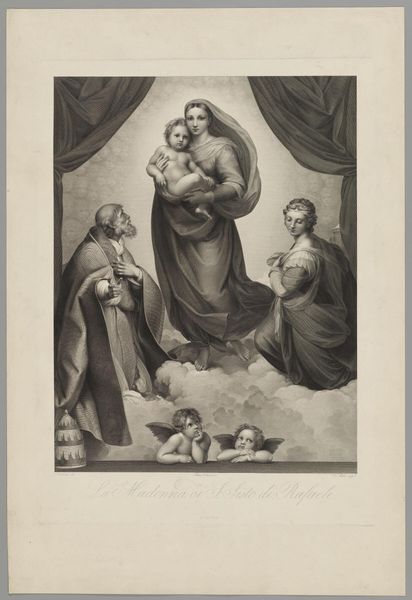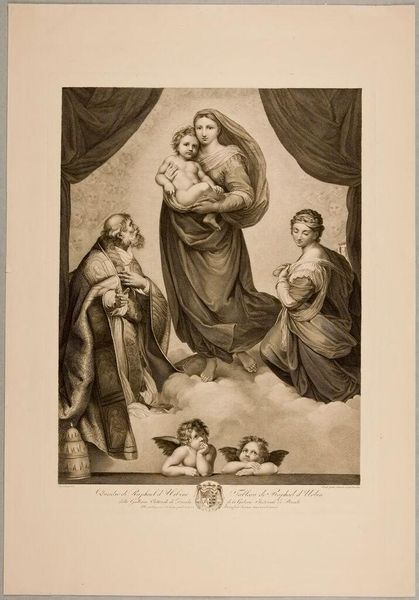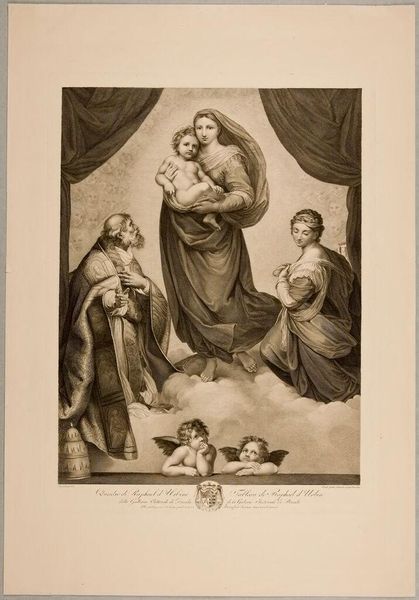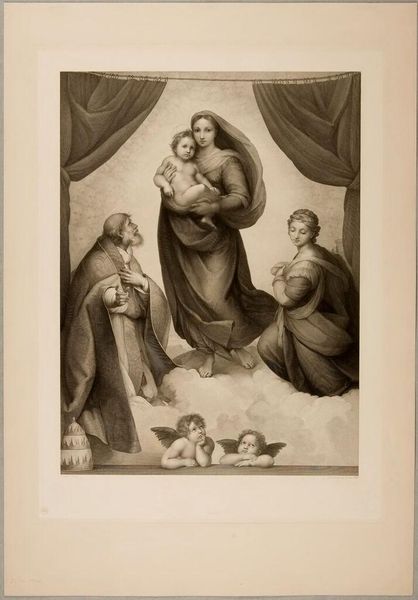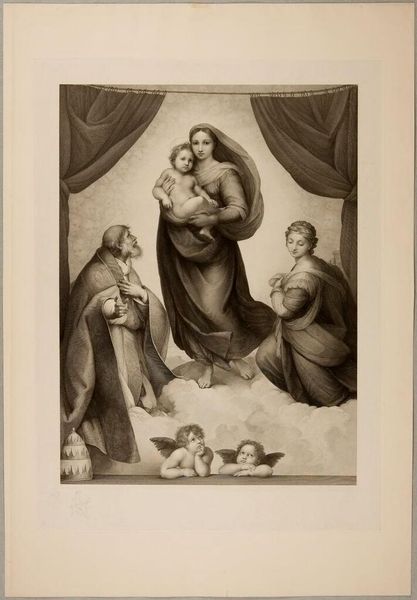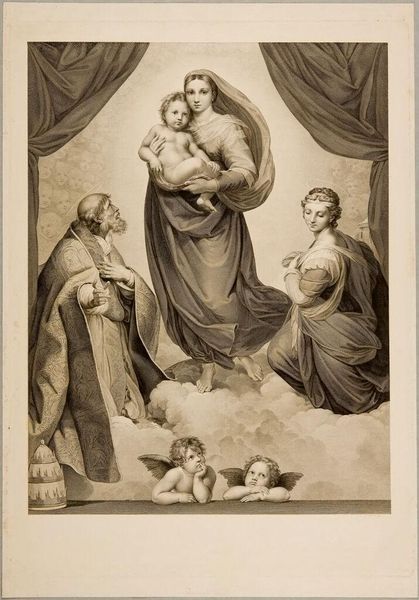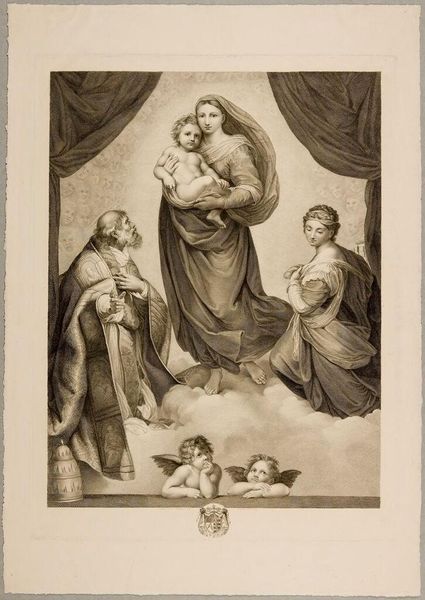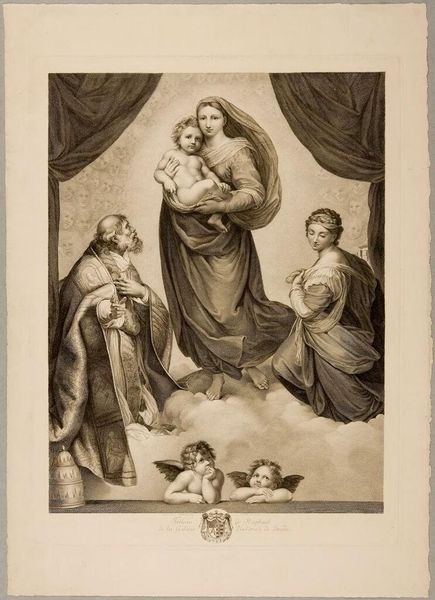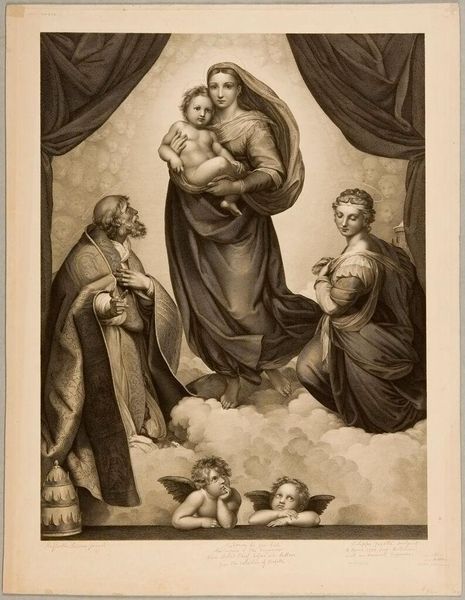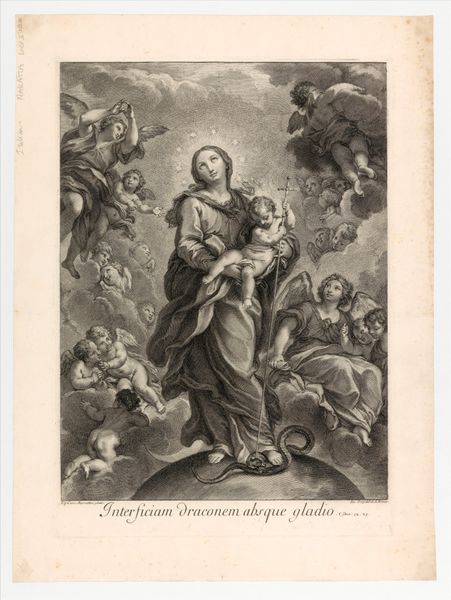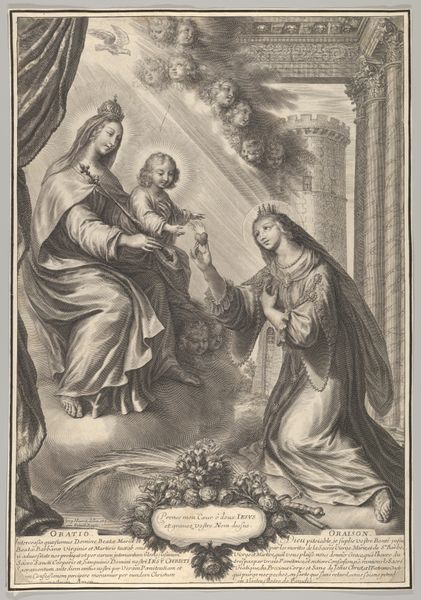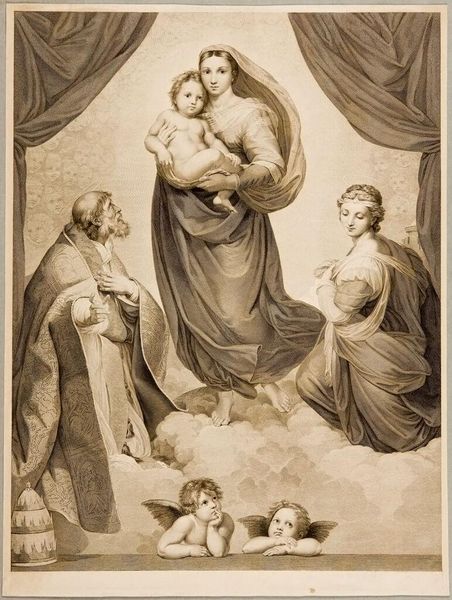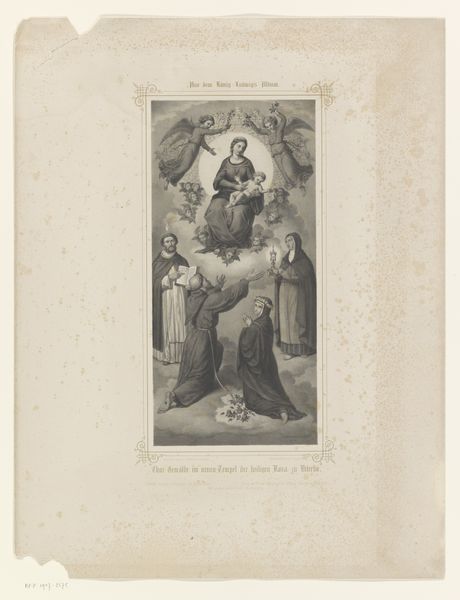
drawing, print, etching, engraving
#
portrait
#
drawing
# print
#
etching
#
figuration
#
child
#
history-painting
#
italian-renaissance
#
engraving
#
angel
Dimensions: plate: 30 1/4 x 22 in. (76.8 x 55.9 cm) sheet: 34 3/4 x 26 1/2 in. (88.3 x 67.3 cm)
Copyright: Public Domain
Curator: Here we have Johann Friedrich Wilhelm Müller’s engraving of The Sistine Madonna, produced between 1795 and 1816. What’s your initial reaction to this historical print? Editor: There's an undeniable serenity to the scene, even with the drama of the drawn curtains. The somber palette evokes a sense of reverence and otherworldly calm. The clouds feel so light; yet, they are carrying such heavy theological and cultural ideas. Curator: Indeed. This work compels us to consider its original context—Raphael’s altarpiece—and how it was received within the fraught dynamics of 18th and 19th-century religious and political power. Müller’s print serves as a crucial site to consider both religious art and shifting cultural meanings through the Age of Revolution. Editor: Absolutely. The image resonates with Christian symbolism. We see the Madonna and Child elevated, flanked by Saint Sixtus and Saint Barbara, with those now-famous cherubic angels at the bottom. The gaze of each figure speaks volumes about devotion and intercession. What's interesting is how deeply this artwork remains embedded in the Western imagination. Curator: What’s compelling is that through this circulation in print form, the image gains newfound sociopolitical potential. Reproductions such as this decoupled the Sistine Madonna from its original ecclesiastical purpose. It made it an icon available to, and reinterpreted by, broader audiences amid religious upheaval and the emergence of secular societies. Editor: I am struck by the recurring visual trope of the curtain being drawn, indicating something sacred being revealed, a symbolic unveiling. The cherubs, for instance, weren't part of Raphael’s first sketches, but become critical additions as representations of divine innocence. Müller translates Raphael's symbols—each gesture, each character—into this beautiful printed copy. Curator: And within our present moment, one that remains saturated with various crises and urgent demands for structural changes, what possibilities can arise if we question who had—and has—access to not only material riches, but to spiritual wealth? What alternative narratives are made invisible through canonization and historical documentation? Editor: You've given me so much to think about. The Sistine Madonna remains potent because its symbology remains emotionally charged even centuries after its creation. Curator: This piece underscores how deeply artworks are impacted by their temporal contexts.
Comments
No comments
Be the first to comment and join the conversation on the ultimate creative platform.
